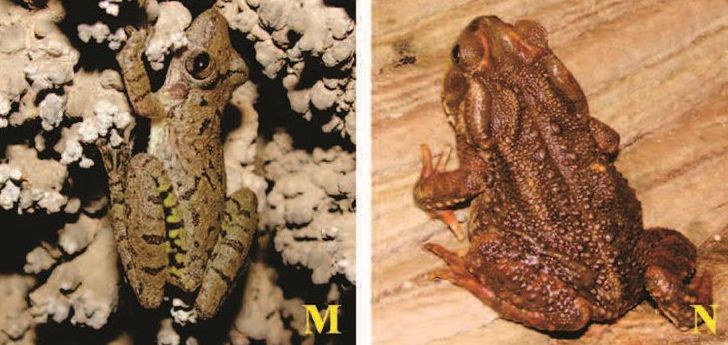Occurrence of anurans in brazilian caves
DOI:
https://doi.org/10.3986/ac.v44i1.649Abstract
Brazil has the greatest diversity of anurans and also one of the greatest speleological patrimonies in the world. However, informations about anurans in Brazilian caves including different biomes and lithologies are scarce. This study sampled 223 caves divided into different biomes (Amazon, Atlantic Forest, Caatinga, Cerrado and transition area) and lithologies (Conglomerate, Granite, Iron-ore, Limestone, Marble, Quartzite, and Sandstone) distributed in eleven Brazilian states. To determine the anuran composition (presence/absence), a single sampling event was conducted in each cave by a team of three researchers in the period 1999−2011, following acoustic and visual search methods. We recorded 54 species distributed 18 genera and 11 families. The caves in the Amazon biome had the highest number of species, followed by caves present in the Cerrado, Caatinga, transition area (Atlantic Forest and Cerrado) and the Atlantic Forest. The caves in the Iron-ore lithology had the highest number of species, followed by the Limestone, Sandstone, Quartzite, Granite, Marble and Conglomerate caves. The anurans proved to be very diverse in Brazilian caves, with this high species richness related to the large amount of biomes and lithologies sampled. The family Leiuperidae had the highest richness and the species Scinax fuscovarius the highest frequency of occurrence in the caves. Also recorded were tadpoles and immature forms inside caves suggesting that not all the species are accidental, and that some species may be using these environments for shelter, protection, food and, even reproduction.Downloads
Download data is not yet available.

Downloads
Published
2015-07-09
How to Cite
Matavelli, R., Martins Campos, A., Neves Feio, R., & Lopes Ferreira, R. (2015). Occurrence of anurans in brazilian caves. Acta Carsologica, 44(1). https://doi.org/10.3986/ac.v44i1.649
Issue
Section
Original papers
License
Authors guarantee that the work is their own original creation and does not infringe any statutory or common-law copyright or any proprietary right of any third party. In case of claims by third parties, authors commit their self to defend the interests of the publisher, and shall cover any potential costs.
More in: Submission chapter




